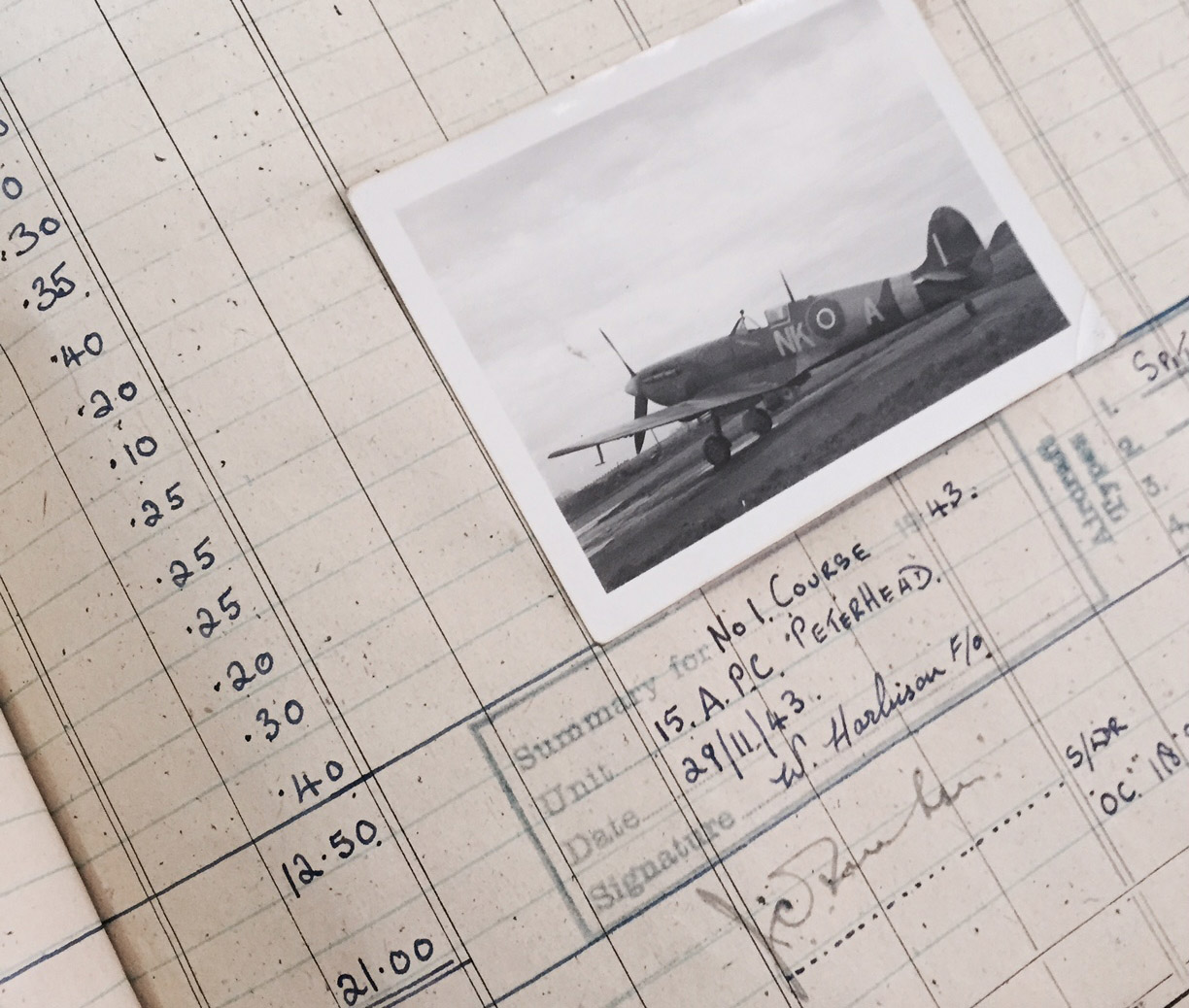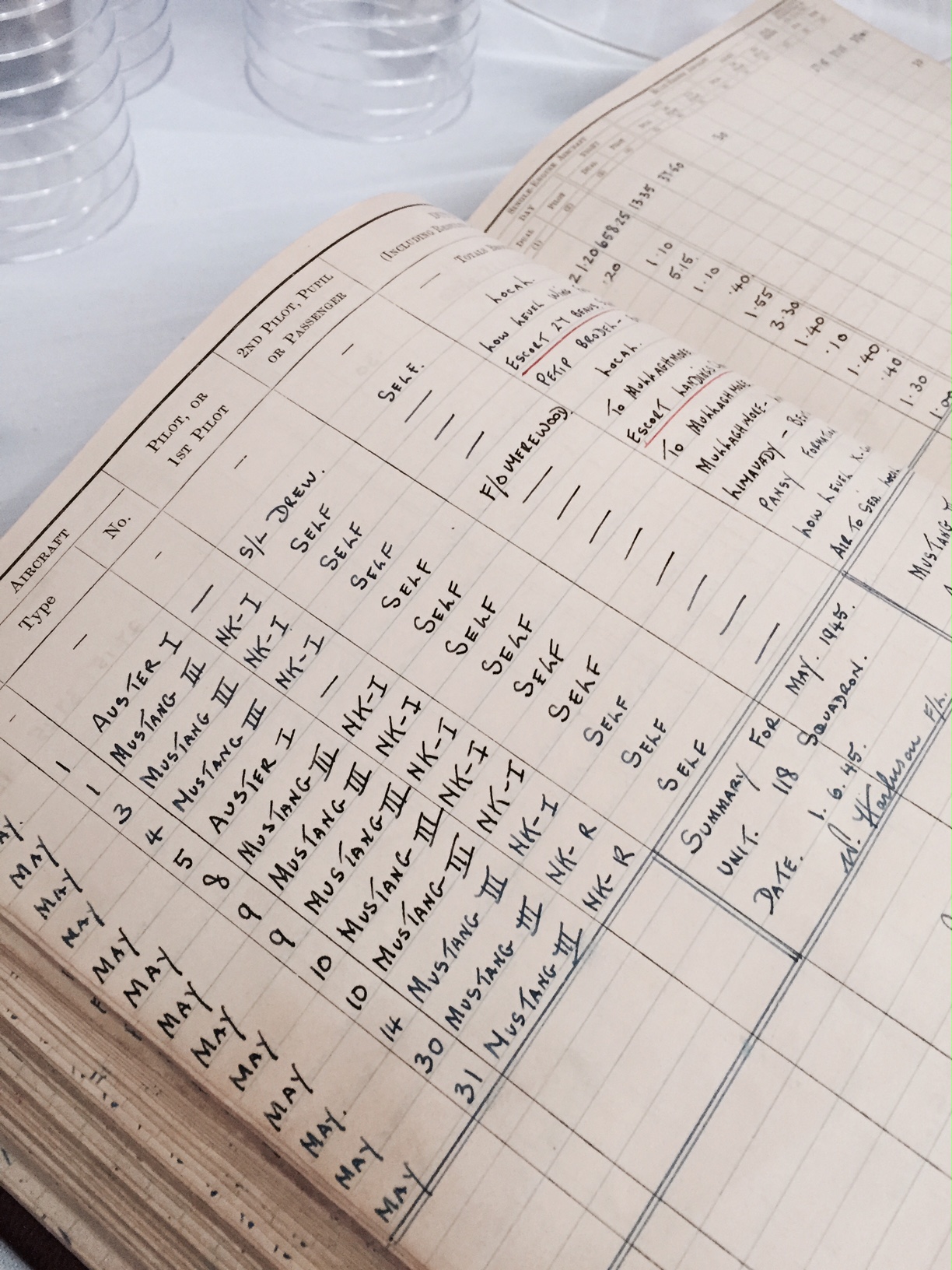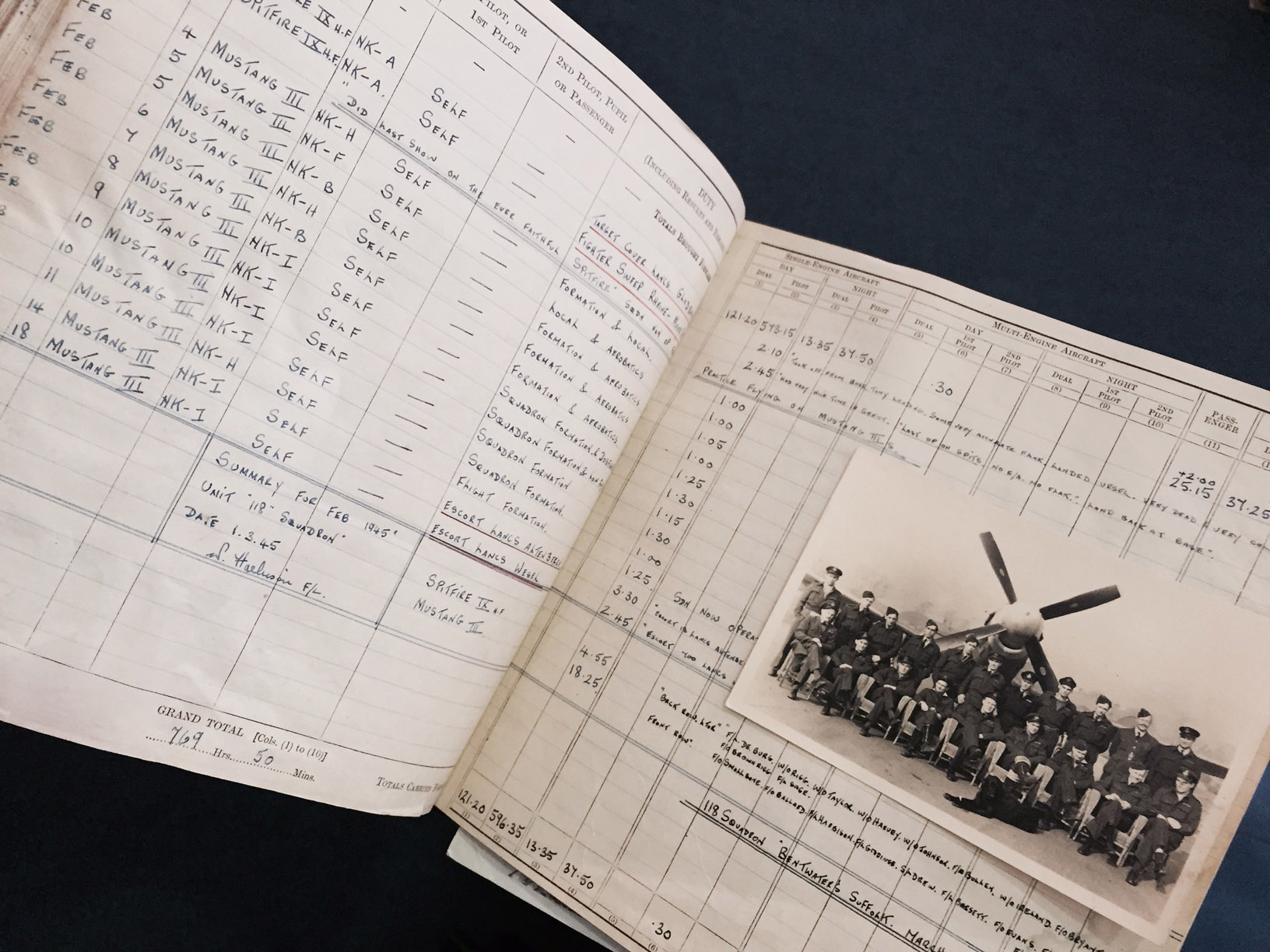Air Vice Marshal William “Paddy” Harbison’s leather-bound logbook is a heavy, neat thing. Hundreds of pages of cream-colored sheets in his exact, square penmanship record more wartime flights than the former Royal Air Force pilot can ever remember.
It has pictures of his crews and airframes that spanned the course of two wars — first the Spitfire he climbed into in 1941; then the P-51 Mustang, which the British flew even before the iconic single-seat fighter became the favorite U.S. aircraft of the war.

Photo of Harbison’s Spitfire (Tara Copp/WEX)
Harbison, American P-38 Lightning pilot Col. Al Tucker, and Col. Charles McGee, of Tuskegee Airmen fame of the 332rd Fighter Group, were honored recently at a U.S, Smithsonian Air & Space Museum event commemorating the 70th anniversary of Victory-Europe day, the day the allies officially accepted Germany’s surrender in World War II.
Related: Thousands gather for WWII tribute and flyover
Harbison became known for his skill in shooting down what was a very early version of a drone — the V-1 flying bomb, or buzz bomb.
“They were pilotless airplanes, very crude ones, that were flown off of Heinkel 111s,” said Harbison, referring to the German-made twin-engine bomber used in the Battle of Britain.
“The Luftwaffe could shoot them like they would shoot a cannon across the channel — and these things had quite a range,” Tucker said. “They had a guidance system that could be aimed so there was a crude ability to get them at least to the vicinity of the target.
“They were terribly dangerous because they usually didn’t hit the mark they were aimed at, so they could fall indiscriminately. I had an idea they were terrifying to the population.”

Harbison’s logbook (Tara Copp/WEX)
Harbison made a name for himself going after the bombs.
“We would shoot them down you know, and when they blew up it was quite a disturbance when you were flying through the debris.” It was better to destroy them over the channel before they got to the population, because “When they ran out of fuel they crashed — and it was a good thing not to be below them,” Harbison said.
All three veterans served beyond World War II. McGee, a P-47 Thunderbolt and Mustang pilot, returned to fly a Mustang and the F-80 Shooting Star in Korea and the RF-4C Phantom II in Vietnam. Tucker also flew the P-80 in Korea, and Harbison flew the F-86 Sabre.
Looking at the pages of missions in Harbison’s book, Tucker explained the absence of his own, saying that his World War II “logbook doesn’t have very much in it. I was one of the earliest pilots of my squadron to be shot down — my only distinction is I’d been in the best prison camp in all of Germany — Stalag Luft 1.”

(Tara Copp/WEX)
Harbison, a resident of Falls Church, Virginia, who’s been a fixture at the Army Navy Club for years, met his match in a pretty flight attendant named Helen Geneva after the war. They married in 1950.
“She still looks well, doesn’t she,” Harbison said.
“I was a stewardess for United,” Helen Harbison said. Paddy Harbison, who was from Northern Ireland, “Had to go back and tell his family about an American girl,” Helen said. “His mother said ‘I hear American girls don’t make good wives’ but we got along very well.” They celebrated 65 years together this month.

